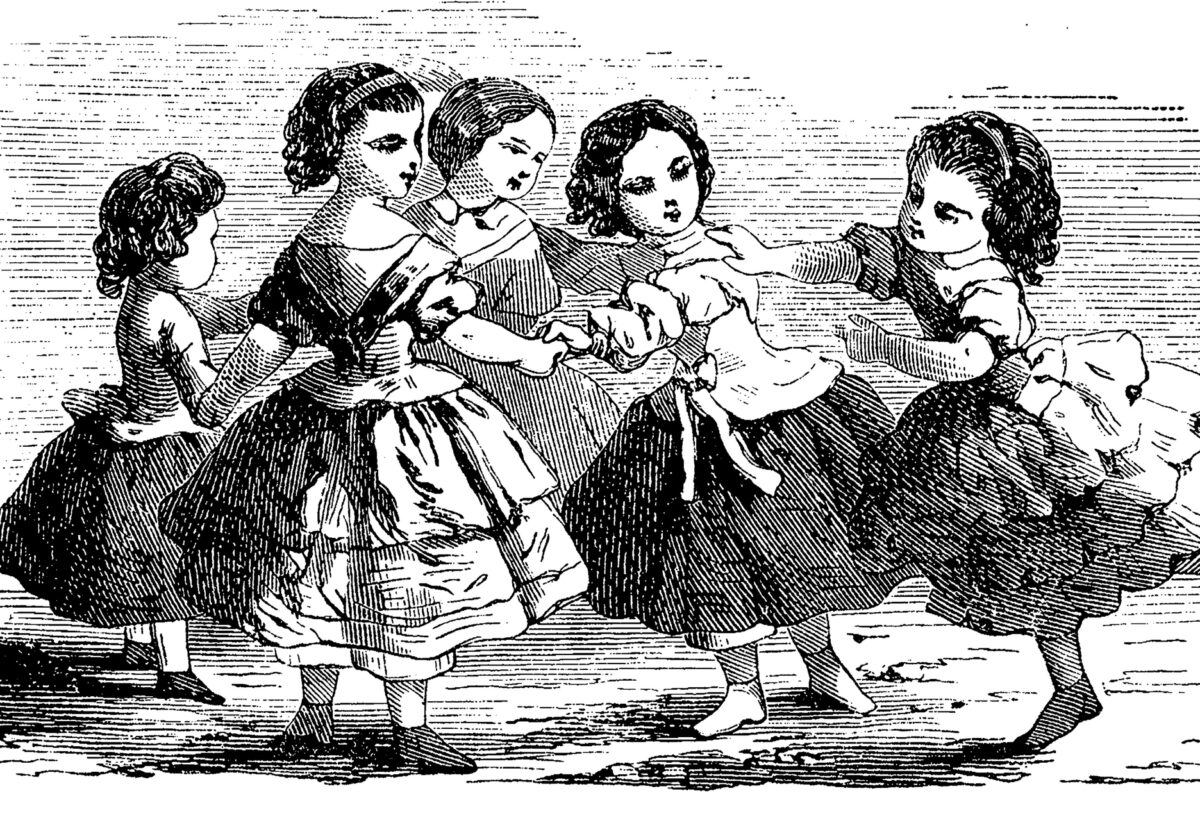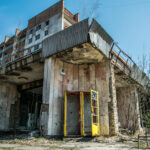 Getty Images
Getty ImagesChildren’s games often seem light-hearted, full of laughter, energy, and imagination. But dig a little deeper, and you’ll find that some of the most well-loved classics—games passed down through generations—have surprisingly dark, and sometimes downright disturbing, historical roots. Whether reflecting war, disease, social hierarchy, or ritual practices, many of these games originated in societies dealing with trauma, superstition, or control. What survives today are sanitised versions, but their origins remain a haunting reminder of how children’s play can mirror the fears and realities of their time. Here are some popular children’s games with unexpectedly grim backstories.
Ring a Ring o’ Roses
This seemingly innocent nursery rhyme and playground game has long been associated with the Great Plague of 1665, and possibly earlier outbreaks of the Black Death. The “roses” in the rhyme are said to refer to the red rash that signalled the onset of the disease. “A pocket full of posies” alludes to the herbs and flowers people carried or stuffed into masks in hopes of warding off the foul smells—and the sickness itself. “Ashes, ashes” is interpreted either as a reference to sneezing (a symptom) or to cremated remains. “We all fall down” chillingly represents the death toll.
Though historians now debate whether this interpretation is accurate or a later invention, the rhyme has become permanently tied to plague lore. That such a terrifying period in history could be embedded in a cheerful circle game speaks volumes about the ways society absorbs and masks trauma through tradition.
London Bridge Is Falling Down
Children linking arms to form a bridge, letting others pass underneath until one is “caught”—it’s a game that seems entirely harmless. But the song itself has roots that may stretch back to medieval rituals and possibly human sacrifice. Some folklore suggests that to keep bridges standing in ancient times, a human—often a child—might be entombed in the foundations to appease spirits or ensure stability.
Whether or not London Bridge itself was built this way, such customs were not unheard of in pre-Christian Europe. The lyrics speak of building the bridge up with wood, clay, bricks, and stone, only to have it “fall down” again and again. The endless cycle of collapse and repair could reflect the bridge’s real, turbulent history—or something more symbolic and grim.
Oranges and Lemons
This cheerful rhyme takes children on a tour of London’s churches, with each line referencing a specific bell and location. But it ends in darkness: “Here comes a chopper to chop off your head!” The final lines are often acted out with children forming an arch and bringing their arms down on someone when the phrase is sung—effectively simulating an execution.
The rhyme is thought to reference public beheadings in London, especially near the infamous Newgate Prison. The abrupt tonal shift from playful to sinister reflects a city whose past was filled with gallows, executions, and public punishment. That this rhyme remains part of children’s games shows just how deeply these stories became embedded in cultural memory.
Rock, Paper, Scissors
While we use Rock, Paper, Scissors today to settle disputes over whose turn it is, the game has a more layered origin. Dating back to ancient China during the Han Dynasty, it was known as “shoushiling.” Later, it appeared in Japan as “jan-ken,” and evolved into a tool for decision-making that wasn’t always so trivial.
In some historical contexts, particularly in samurai Japan, similar chance-based games were used to resolve real disputes or to determine decisions with serious consequences. The game’s premise—each gesture defeating another—also mirrors broader ideas of power, hierarchy, and strategy in society. A children’s game now, but once tied to outcomes where the stakes could be far more consequential.
Hide and Seek
Hide and Seek might seem like a purely playful exercise in evasion, but it eerily mirrors real survival tactics used throughout history. During the Holocaust, children and their families often had to hide for days or weeks in silence to avoid detection by Nazi forces. During earlier centuries, those fleeing religious persecution, witch hunts, or political purges relied on hiding to survive.
Even in less extreme times, the game resonates with a deeper instinct—to be quiet, unseen, and safe. It teaches children strategy and awareness, but also unintentionally echoes times when disappearing from view was a matter of life and death.
Duck, Duck, Goose
This circle game appears innocent enough: children sit, one walks around tapping heads until choosing someone to chase them. But some interpretations trace its structure back to ancient sacrificial rites and scapegoating customs. In early Scandinavian and Germanic cultures, choosing someone from a group—at random or symbolically—was often part of seasonal rituals or fertility ceremonies, which sometimes involved the expulsion or sacrifice of a chosen individual.
While there’s no direct evidence linking this game to such practices, the format—a circle, the moment of selection, the chase—mirrors these older traditions. It’s possible that such themes evolved into children’s games over centuries, their original meanings diluted but not entirely erased.
Hopscotch
Most think of hopscotch as a simple chalk-and-pavement game. But its roots stretch back to ancient Rome, where military training included running and jumping through numbered grids while wearing heavy armour. These drills helped develop strength, agility, and coordination.
Children across Europe mimicked what they saw soldiers do, gradually adapting the structure into a more playful version. The hopscotch pattern—a progression of steps—may have come to symbolise a journey, with some suggesting spiritual undertones representing the path to heaven or the stages of life. What remains today is a stripped-back version of what was once a serious physical trial.
Skipping Rhymes
The rhymes sung during skipping games are often quirky, humorous, or odd—but look closely, and many are laced with violence, tragedy, and warnings. Lines like “Cinderella, dressed in yella, went upstairs to kiss her fella… made a mistake and kissed a snake” carry strong undertones of betrayal, danger, and misjudgement. Others talk of schoolyard cruelty, death, or punishment in rhyming verse.
These rhymes may have served as a coping mechanism during times when children absorbed more adult worries than we like to admit. War, domestic strife, and societal instability often influenced the chants kids came up with. Encoded in rhyme, these topics became safe to repeat and pass down.
Eeny, Meeny, Miny, Moe
Today, this rhyme is a staple of choosing games, but it carries a deeply problematic past. Earlier versions of “Eeny, meeny, miny, moe” used offensive racial language that reflected the prejudices of the time. Over the years, the rhyme was adapted and censored, but its troubling legacy remains a stain on what many still see as an innocent chant.
It’s a stark example of how cultural norms shift—and how children’s rhymes can unintentionally preserve outdated and harmful attitudes. The fact that it’s still in use today shows how persistent such oral traditions can be, even when their origins are uncomfortable.
Musical Chairs
A staple of birthday parties and classrooms, Musical Chairs is usually seen as chaotic fun. But its structure—fewer chairs than players, and one person always being excluded—has drawn comparisons to social exclusion and competition. Some sociologists even suggest that the game teaches early lessons in scarcity and rivalry, mimicking real-world systems where resources (jobs, wealth, acceptance) are limited.
Though not violent or grim in a historical sense, the game subtly reinforces ideas of survival through elimination. The frantic rush for a seat, and the laughter that follows someone’s loss, can carry echoes of harsher realities in a highly structured world.
It’s easy to dismiss these games as harmless fun, and in most modern contexts, that’s exactly what they are. But their origins often reflect a darker world—one shaped by disease, punishment, sacrifice, social conditioning, and survival. These childhood staples are echoes of old fears, passed along in sing-song voices and shared rules. They may be played with laughter today, but their histories remind us that even the most innocent games can carry stories we’ve forgotten to question.



